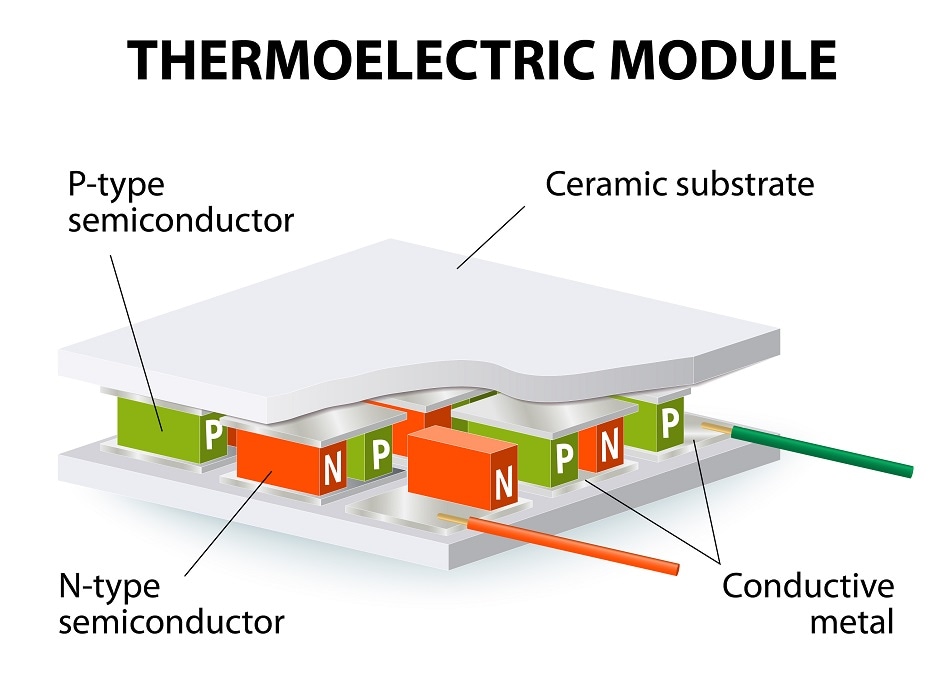Sep 19 2017
Thermoelectric materials will be a vital resource for the future as they are capable of producing electricity from sources of heat that would otherwise go to waste, from vehicle tailpipes, power plants and elsewhere, without producing additional greenhouse gases.
 Designua/ Shutterstock.com
Designua/ Shutterstock.com
Despite the fact that several materials with thermoelectric properties have been discovered, most of them generate too little power for practical applications.
A team, made up of Researchers from Universities across China and the United States, as well as Oak Ridge National Laboratory, is presently reporting a new mechanism to enhance performance via higher carrier mobility, and is also assessing how quickly charge-carrying electrons can move through the material.
The work has been reported this week in the Proceedings of the National Academy of Science, and it focuses on a newly discovered n-type magnesium-antimony material with a moderately high thermoelectric figure of merit, however Lead Author Zhifeng Ren stated that the concept could also apply to other materials.
“When you improve mobility, you improve electron transport and overall performance,” said Ren, M.D. Anderson Chair professor of physics at the University of Houston and principal investigator at the Texas Center for Superconductivity at UH.
Thermoelectric materials generate electricity by exploiting the flow of heat current from a warmer area to a cooler area, and their effectiveness is calculated as the measure of how well the material transforms heat into power. However, Ren explains that the conversion rate is less important than the overall amount of power that can be generated since waste heat is both a free and abundant source of fuel. This indeed has encouraged Researchers to identify ways of improving the power factor of thermoelectric materials.
Paul Ching-Wu Chu, TLL Temple Chair of Science, Founding Director and Chief Scientist of the Texas Center for Superconductivity, pointed out that Ren has earlier demonstrated the significance of a material’s power factor in establishing how well it will function in a thermoelectric device. . Chu is a Co-author for this latest work, which he said, “demonstrates in the n-type magnesium-antimony-based materials that the power factor can indeed be enhanced by properly tuning the carrier scattering in the material.”
Chu further added, “That provides a new avenue to more powerful thermoelectric devices.”
Thermoelectric semiconductors are available in two variations, n-type, developed by replacing an element causing a “free” electron to carry the charge, and p-type, in which the replacing element has fewer electrons than the element which it replaced, leaving a “hole” that enables movement of energy as the electrons pass across the material to fill the vacant spot.
The work that has been reported in PNAS addresses the requirement for a more powerful n-type magnesium-antimony compound, expanding its efficiency as a thermoelectric material capable of being paired with an efficient p-type magnesium-antimony material, which had been earlier reported.
The Researchers stated that the power factor of the material can be boosted by increasing carrier mobility. “Here we report a substantial enhancement in carrier mobility by tuning the carrier scattering mechanism in n-type Mg3Sb2-based materials,” they wrote. “… Our results clearly demonstrate that the strategy of tuning the carrier scattering mechanism is quite effective for improving the mobility and should also be applicable to other material systems.”
A small fraction of magnesium was replaced in the compound with a wide range of transition-metal elements, including tantalum, hafnium, cobalt and iron, in order to determine how best to enhance carrier mobility and, through that, the power factor of the material.
“Our work,” the Researchers conclude, “demonstrates that the carrier scattering mechanism could play a vital role in the thermoelectric properties of the material, and the concept of tuning the carrier scattering mechanism should be widely applicable to a variety of material systems.”
Besides Chu and Ren, the other Researchers involved with the project include Jun Mao, Jing Shuai, Shaowei Song and Zihang Liu, all of the University of Houston; Yixuan Wu and Yanzhong Pei of Tongji University; Rebecca Dally and Stephen Wilson of the University of California, Santa Barbara; Jiawei Zhou and Gang Chen of the Massachusetts Institute of Technology; Jifeng Sun and David Singh of the University of Missouri; Qinyong Zhang of Xihua University and Clarina dela Cruz of the Oak Ridge National Laboratory.